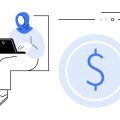What is Professional Liability (E&O) Insurance?
Professional liability insurance, also known as errors and omissions (E&O) insurance, is a specialized type of coverage designed to protect businesses and professionals from claims related to mistakes, negligence, or failure to perform their professional duties. In today’s complex business environment, even the most skilled professionals can make errors or face accusations from clients who are unhappy with their work. This insurance steps in to help cover legal costs, settlements, and other expenses that might arise from such claims.
Who Needs Professional Liability (E&O) Insurance?
E&O insurance isn’t just for doctors or lawyers; it’s crucial for a wide range of professions across the United States. If your business provides services or advice to clients, you could be at risk for lawsuits—even if you haven’t made an actual mistake. Here’s a quick look at some common industries and roles that typically need this protection:
| Profession/Industry | Why E&O Is Needed |
|---|---|
| Consultants | Clients may claim financial loss due to advice given |
| Real Estate Agents/Brokers | Mistakes in property listings or transactions can lead to lawsuits |
| IT Professionals | Software errors or system failures might cause client losses |
| Accountants & Tax Preparers | Errors in filings or calculations could result in penalties for clients |
| Architects & Engineers | Design flaws or project delays may cause costly problems for clients |
| Medical Professionals (non-physicians) | Mistakes in care or documentation can trigger legal action |
| Insurance Agents & Brokers | Miscommunication about policy details may result in uncovered losses for clients |
Why is E&O Insurance Essential for U.S. Businesses?
Lawsuits over professional mistakes are increasingly common in the U.S., and even one claim can be financially devastating for a business or individual. E&O insurance provides a safety net by helping cover attorney fees, court costs, settlements, and judgments. Without this protection, businesses might have to pay these expenses out of pocket, risking their reputation and financial stability.
Key Benefits of Professional Liability (E&O) Insurance:
- Covers Legal Costs: Handles expenses related to defending against covered claims.
- Pays Settlements/Judgments: Helps pay damages awarded to clients if your business is found liable.
- Protects Reputation: Shows clients you take responsibility seriously and have safeguards in place.
- Contract Requirement: Many client contracts require proof of E&O coverage before starting work.
- Covers Past Work: Some policies offer retroactive coverage for previous projects.
2. How Does E&O Insurance Work?
How E&O Insurance Policies Operate
E&O (Errors and Omissions) insurance is designed to protect professionals and businesses when a client claims that your service or advice caused them financial loss. In the US, this type of insurance is common for consultants, real estate agents, lawyers, tech companies, accountants, and many other professionals. The policy usually covers legal defense costs, settlements, and judgments—even if the claim turns out to be groundless.
Typical Coverage Provided by E&O Insurance
| Whats Covered | What’s Not Covered |
|---|---|
| Legal defense costs | Bodily injury or property damage (these are covered by other types of insurance) |
| Settlements and judgments from lawsuits | Fraudulent or criminal acts |
| Claims of negligence, errors, or omissions in professional services | Intentional wrongdoing |
| Court fees and related expenses | Employee injuries (covered under workers’ comp) |
| Libel, slander, or misrepresentation tied to professional services | General business disputes unrelated to professional services |
Examples of Claims and Real-World Scenarios in the US
- Consulting Firm: A client sues because they followed your business strategy advice and lost money. Your E&O policy could cover your legal costs even if you did everything right.
- Real Estate Agent: You accidentally overlook an important disclosure about a property. The buyer sues for damages. E&O insurance can help pay for your defense and any settlement.
- IT Service Provider: A software bug you missed leads to a client’s data loss. The client files a lawsuit claiming negligence. Your E&O insurance would step in here.
- Accountant: An error on a tax return results in fines for a client. They hold you responsible for the mistake—your policy could cover these losses.
- Marketing Agency: A campaign is delivered late, causing your client to lose a major sale opportunity. The client sues for damages; E&O helps with legal expenses.
E&O Policy Features Common in the US Market
- Claims-made basis: Most policies only cover claims made during the policy period—so it’s important to keep coverage active.
- Retroactive date: Some policies cover incidents that happened before the policy start date if reported while it’s active.
- Deductibles: You’ll typically pay a deductible amount before coverage kicks in.
- Coverage limits: There’s usually a maximum amount the insurer will pay per claim and per year.
E&O insurance provides peace of mind so you can focus on running your business without worrying about unexpected lawsuits over honest mistakes or misunderstandings.
![]()
3. Key Industries and Professions That Need E&O Coverage
Professional Liability Insurance, also known as Errors & Omissions (E&O) insurance, is not just for large corporations or high-profile professions. Many different industries across the US face unique risks that make E&O coverage essential. Understanding which businesses commonly need this protection—and why—can help you see if your own business could benefit.
Industries Most Commonly Requiring E&O Insurance
| Industry/Profession | Common Risks Covered by E&O Insurance |
|---|---|
| Consulting | Mistakes in advice, failure to deliver promised results, miscommunication with clients |
| Technology & IT Services | Software bugs, system outages, data breaches, failing to meet project deadlines |
| Legal Services (Lawyers) | Missed deadlines, incorrect legal advice, breach of client confidentiality |
| Real Estate Professionals | Misrepresentation, failure to disclose property issues, errors in paperwork |
| Accounting & Financial Advisors | Calculation errors, poor financial advice, tax filing mistakes |
| Healthcare Professionals (non-MD) | Mistakes in documentation, incorrect billing, administrative errors |
| Marketing & Advertising Agencies | Breach of contract, copyright infringement, false advertising claims |
| Architects & Engineers | Design flaws, project delays due to planning errors, non-compliance with regulations |
Why These Professions Face Unique Risks
E&O claims usually arise when a client believes your professional service or advice has caused them financial harm. In fields like technology and consulting, even a small error can lead to significant losses for your client. For example, a software developer might unintentionally introduce a bug that causes a clients website to crash during peak shopping season. In real estate or law, paperwork mistakes can delay deals or lead to lawsuits over lost opportunities.
The Role of E&O Insurance in Protecting Your Business
No matter how experienced you are or how careful you try to be, mistakes happen—even to the best professionals. E&O insurance helps cover legal costs and settlements so one honest mistake doesn’t threaten your business’s future. If you operate in any of these industries or offer specialized advice or services to clients in the US, having E&O coverage can provide peace of mind and may even be required by contracts or industry regulations.
4. What E&O Insurance Typically Covers and Excludes
Standard Coverages in Professional Liability (E&O) Policies
Errors and Omissions (E&O) insurance, also known as professional liability insurance, helps protect businesses and professionals from claims of negligence, mistakes, or failures to perform their professional duties. Here are some of the most common coverages you’ll find in a typical E&O policy for U.S. businesses:
| Coverage Area | What’s Included |
|---|---|
| Negligence | Covers claims arising from errors, omissions, or negligent acts in providing professional services. |
| Legal Defense Costs | Pays for attorney fees, court costs, and other legal expenses—even if the claim is groundless. |
| Settlements & Judgments | Covers the cost of settlements or judgments if you’re found liable, up to policy limits. |
| Breach of Duty | Protection against claims that you failed to fulfill your professional responsibilities. |
| Mistakes & Oversights | Covers honest mistakes that lead to financial loss for a client. |
Typical Exclusions in E&O Policies
It’s equally important to know what E&O insurance does not cover. Here are some standard exclusions:
| Exclusion Category | What’s Not Covered |
|---|---|
| Intentional Wrongdoing or Fraud | No coverage for deliberately dishonest or fraudulent acts. |
| Bodily Injury & Property Damage | E&O doesn’t cover physical injury or damage to property—these are typically handled by general liability policies. |
| Employment Practices Liability | Claims related to employment issues like harassment or discrimination require separate EPLI coverage. |
| Prior Acts Known Claims | If you knew about a potential claim before the policy started, it’s usually not covered. |
| Contractual Liability | E&O generally won’t cover liabilities you’ve assumed under a contract unless specifically stated. |
Main Policy Terms to Understand: Limits, Deductibles, and Defense Costs
Policy Limits and Sub-limits
The policy limit is the maximum amount your insurer will pay for claims during the policy period. Some policies have both per-claim and aggregate annual limits. Sub-limits may apply to certain types of claims, such as regulatory investigations.
Deductibles (Retention)
You’re responsible for paying a portion of each claim—the deductible (also called retention). Higher deductibles can lower your premium but increase your out-of-pocket risk if a claim arises.
“Defense Outside vs. Inside the Limits”
This crucial policy wording determines whether legal defense costs reduce your available limit (“inside” the limits) or are paid in addition to it (“outside” the limits). U.S. businesses should check this language carefully—having defense costs outside the limits gives you more protection for settlements or judgments.
Quick Reference Table: Key E&O Policy Features for US Businesses
| Feature | Description / Importance |
|---|---|
| Limits of Liability | The cap on what insurers pay; important to match with business risks |
| Deductible/Retention | Your share of costs per claim; affects premium and cash flow |
| Defense Cost Handling | Affects how much is left for settlements/judgments after legal fees |
| Certain Exclusions | Avoid surprises—know what isn’t covered before you need it! |
E&O insurance is designed with U.S. business practices and legal systems in mind. Always review your policy wording carefully and consult an insurance professional who understands local laws and industry standards.
5. How to Obtain and Manage E&O Insurance
Choosing the Right E&O Policy for Your Business
Every business has unique needs when it comes to professional liability insurance. To make sure you’re getting the best protection, start by evaluating your company’s services, potential risks, and client expectations. Here are a few simple steps to help you:
- Identify your main exposures: Consider what could go wrong in the services you provide.
- Review industry standards: Some industries have minimum coverage requirements or recommended policy features.
- Check client contracts: Many clients require specific coverage limits before working with you.
Assessing Your Coverage Needs
The right amount of coverage depends on your business size, industry, and risk factors. Use this table as a general guide:
| Business Type | Suggested Coverage Limit |
|---|---|
| Sole Proprietor/Small Firm | $250,000 – $1 million |
| Medium-Sized Business | $1 million – $5 million |
| Large Company/High-Risk Industry | $5 million+ |
If you work in a regulated field (like law, accounting, or healthcare), check if there are state-mandated minimums for E&O insurance.
Working with Insurance Agents or Brokers
An experienced insurance agent or broker can help you navigate the many options available. They’ll compare policies from multiple insurers, explain key terms, and recommend coverage that fits your business. Ask questions like:
- What does this policy cover and exclude?
- Are defense costs included within the policy limit?
- How much is the deductible?
- Can I add extra endorsements if my business grows?
Brokers work for you, not the insurance company, so they often give unbiased advice.
Maintaining Adequate Protection Over Time
Your business will change over time—maybe you add new services or take on bigger clients. Review your E&O policy each year and after any major business changes. Make sure to:
- Update your coverage if revenue increases or services expand.
- Add endorsements for new risks (like cyber liability).
- Keep records of all claims and communications with your insurer.
- Renew your policy before it expires to avoid coverage gaps.
E&O Insurance Management Checklist
| Task | Frequency |
|---|---|
| Review policy details with agent/broker | Annually or after major changes |
| Update business information (services, revenue) | As needed |
| Renew policy on time | Every policy period (usually yearly) |
| Add/remove endorsements/riders | As risks evolve |
| Document claims/incidents | Whenever they occur |
E&O insurance isn’t set-it-and-forget-it protection. Stay proactive so your business is always covered—no matter what comes your way.


